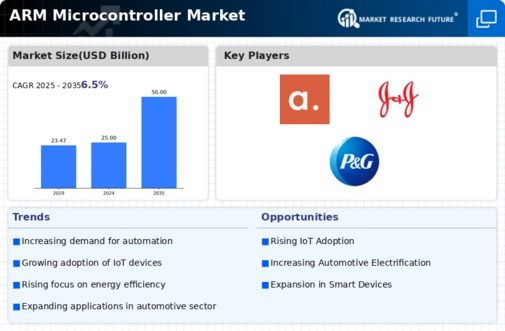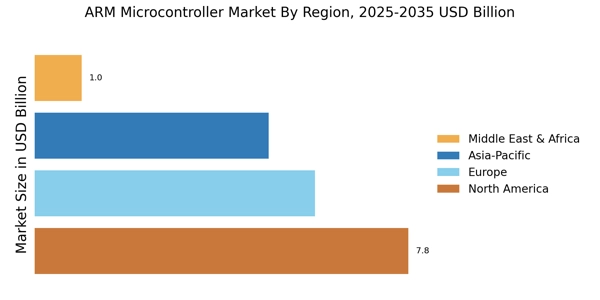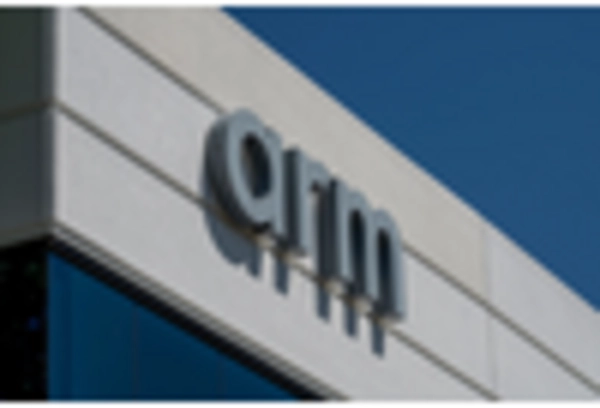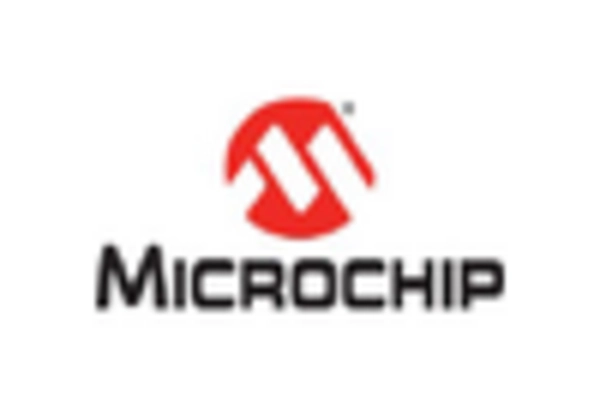Emergence of Wearable Technology
The rise of wearable technology is reshaping the landscape of the ARM Microcontroller Market. Wearables, such as fitness trackers and smartwatches, require compact and energy-efficient microcontrollers to function effectively. The wearable technology market is anticipated to reach USD 100 billion by 2025, creating a substantial opportunity for ARM microcontrollers, which are designed to deliver high performance while consuming minimal power. This trend indicates a growing reliance on ARM microcontrollers in the development of innovative wearable devices, further propelling the market forward.
Growth in Automotive Electronics
The automotive sector is undergoing a significant transformation, with a marked increase in the integration of electronics in vehicles. The ARM Microcontroller Market is poised to benefit from this trend, as microcontrollers play a crucial role in various automotive applications, including advanced driver-assistance systems (ADAS) and infotainment systems. By 2025, the automotive electronics market is projected to reach USD 300 billion, with ARM microcontrollers being a preferred choice due to their reliability and efficiency. This growth in automotive electronics not only drives demand for ARM microcontrollers but also encourages innovation in automotive technology, further solidifying their importance in the industry.
Expansion of Industrial Automation
The shift towards industrial automation is a significant catalyst for the ARM Microcontroller Market. As industries increasingly adopt automation technologies to enhance productivity and reduce operational costs, the demand for reliable and efficient microcontrollers escalates. In 2025, the industrial automation market is expected to exceed USD 200 billion, with ARM microcontrollers being integral to various applications such as robotics, process control, and machine monitoring. This trend suggests that the ARM Microcontroller Market will experience substantial growth, driven by the need for advanced control systems and real-time data processing capabilities.
Increasing Adoption of Smart Devices
The proliferation of smart devices is a pivotal driver for the ARM Microcontroller Market. As consumers increasingly embrace smart home technologies, wearables, and connected appliances, the demand for efficient microcontrollers rises. In 2025, it is estimated that the number of connected devices will surpass 30 billion, necessitating advanced microcontroller solutions. ARM microcontrollers, known for their low power consumption and high performance, are well-positioned to meet this demand. This trend indicates a robust growth trajectory for the ARM Microcontroller Market, as manufacturers seek to integrate these microcontrollers into their products to enhance functionality and user experience.
Advancements in Communication Technologies
The rapid advancements in communication technologies, particularly in 5G and beyond, are driving the ARM Microcontroller Market. As the demand for high-speed connectivity increases, microcontrollers that can support advanced communication protocols become essential. The 5G technology rollout is expected to create new applications and services, leading to an increased need for ARM microcontrollers in various sectors, including telecommunications and consumer electronics. This trend suggests that the ARM Microcontroller Market will continue to evolve, adapting to the changing landscape of communication technologies and their applications.
















Leave a Comment